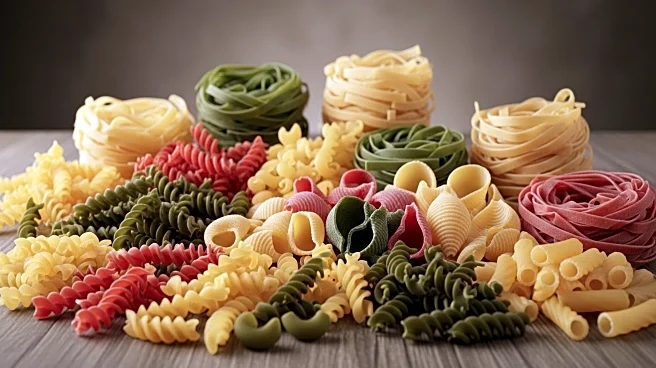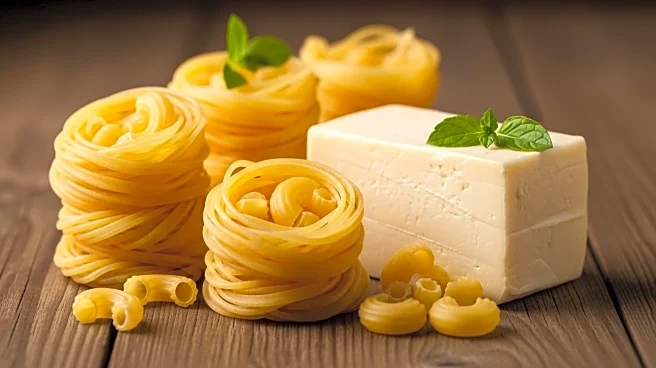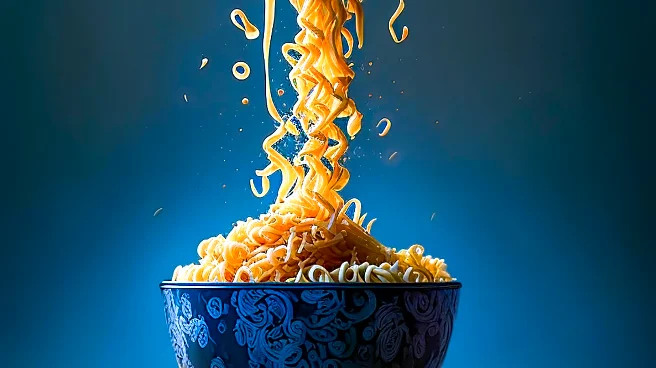Pasta is a beloved staple food, primarily made from durum wheat, which is rich in carbohydrates and protein. It often includes essential nutrients such as iron, dietary fiber, potassium, and
B vitamins, making it a nutritious choice for many. Whole wheat pasta provides more dietary fiber compared to pasta made from degermed flour, offering additional health benefits. Originating from Italy, pasta has become a global culinary favorite, with varieties like spaghetti and macaroni leading the charge. Industrial production of pasta began in the 18th century, revolutionizing its availability and consumption worldwide.
## Nutritional Composition Pasta is primarily composed of carbohydrates, which serve as a vital energy source for the body. It also contains protein, contributing to muscle repair and growth. The inclusion of iron in
pasta aids in the production of hemoglobin, essential for transporting oxygen in the blood. Dietary fiber, particularly in whole wheat pasta, supports digestive health and helps maintain a healthy weight. Additionally, pasta is enriched with B vitamins, which play a crucial role in energy metabolism and maintaining healthy skin and brain function.
## Cultural Significance Pasta holds a significant place in Italian cuisine and
culture, often associated with family gatherings and traditional recipes passed down through generations. Its versatility allows it to be paired with a variety of sauces and ingredients, making it a staple in many households. The iconic scene from the 1955 animated movie "Lady and the Tramp," where the title characters share a plate of spaghetti, highlights pasta's cultural impact and its role in popular media.
##
Production and Varieties The production of pasta involves mixing milled wheat with water, sometimes enriched with vitamins and minerals, to create a homogeneous dough. This dough is then shaped into various forms, such as spaghetti, macaroni, and spaghettoni, using auger extruders. The process requires careful attention to detail to ensure the pasta is free from air bubbles and maintains the desired texture. Italian spaghetti is typically made from durum-wheat semolina, known for its firm texture and ability to hold sauces well.
## Historical Origins The history of pasta dates back to the Etruscan civilization, with the first concrete information on
pasta products in Italy. The popular legend of Marco Polo bringing pasta from China is often debated among historians, who believe that noodles were imported earlier from the Arabs. The Mediterranean region is considered the birthplace of pasta, with early references to a mixture of flour and water called "itrion" by the 2nd-century Greek physician Galen.
## Pasta in Popular Culture Pasta has transcended its culinary roots to become
a symbol of Italian culture and cuisine worldwide. Its presence in films, such as "Lady and the Tramp," and its role in family traditions and celebrations underscore its cultural significance. The adaptability of pasta to various culinary styles and its ability to bring people together around the dining table continue to make it a cherished food across the globe.
For the benefit of users - Parts of this article may include
content generated using AI tools. Our teams are making active and commercially reasonable efforts to moderate all AI generated content. Our moderation processes are improving however our processes are carried out on a best-effort basis and may not be exhaustive in nature. We encourage our users to consume the content judiciously and rely on their own research for accuracy of facts. We maintain that all AI generated content on our platform is for entertainment purposes only. To know more about how we use AI, you can write to us at support_spaces@glance.com














